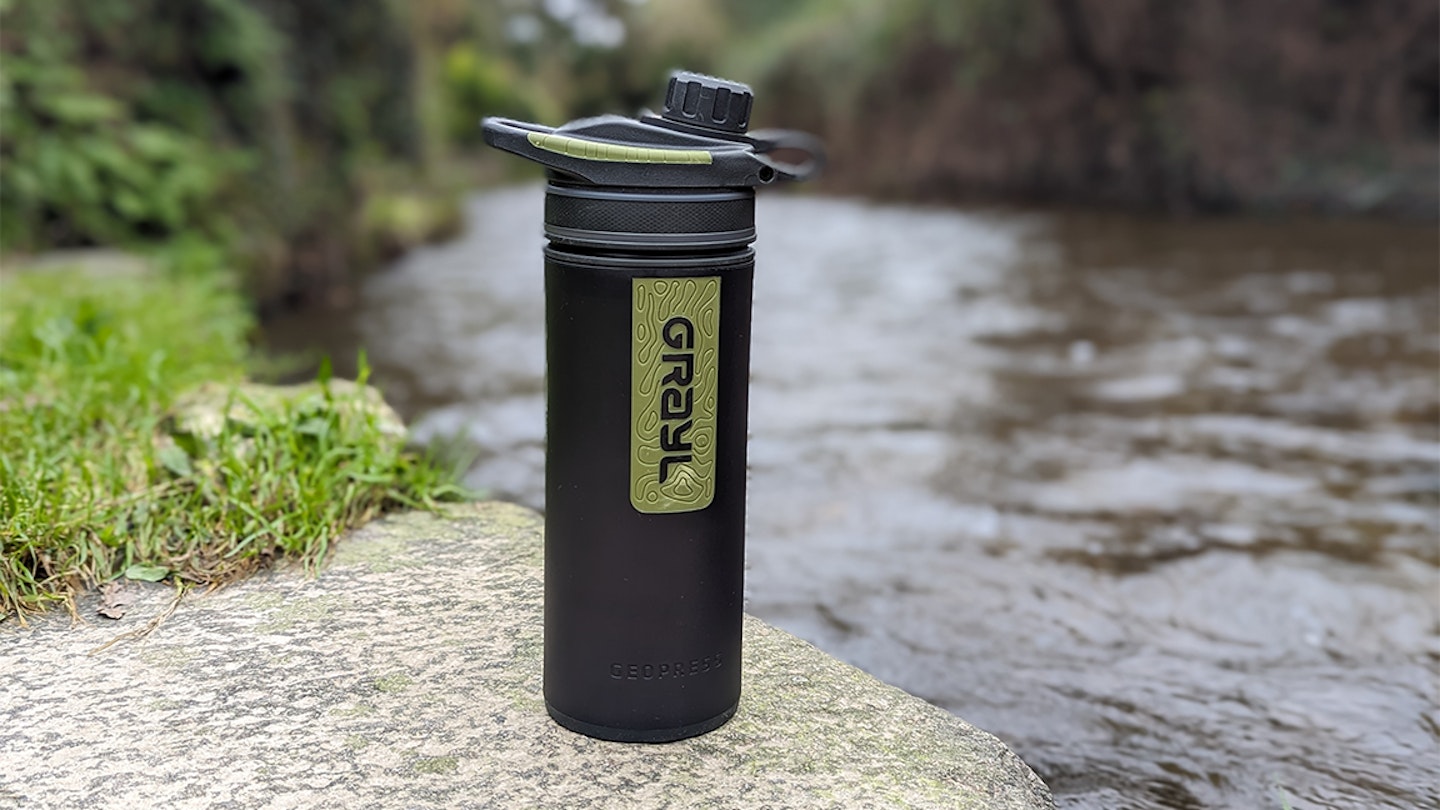Having access to drinkable tap water is a luxury we take for granted in the UK, that’s not as common elsewhere in the world, nor when hiking. A filter water bottle such as the likes of the Grayl GeoPress Purifier is designed to reliably eradicate impurities in water that can do you harm if consumed.
Having a filter water bottle as part of your essential hiking or travelling kit will not only be extremely useful, it’ll also mean there’s no need to waste money on bottled water, minimising your consumption of single-use plastic. While there are several means to purify water, including the use of chlorine tablets which can give your drink a chemical taste, we’ve found a tried and tested purifier bottle to be the most convenient for long-term use when purifying wild or non-tap water.
Granted, not all filter bottles are created equal and since there are no hard-set regulations for the market, it’s important to use a bottle that comes recommended by other hikers or from a well-known brand like Grayl, who have in their own words revolutionised portable purification with the GeoPress.
Grayl GeoPress Purifier design and features

Unlike other bottles where the filter sits within the mouthpiece or straw, the filter of the GeoPress is set into the bottom of the bottle. Picture a typical coffee cafetière which when pressed down, filters out the coffee granules from the main body. The GeoPress works in a very similar way, pushing down unclean water and leaving filtered, safe water in the bottle ready to drink.
The bottle itself comes in two compartments, there’s the main outer bottle, which can be used to scoop up stream water or collect water from a tap. The bottle’s mouth is wide, which makes it easy to collect water and also to clean. The bottle top is easy to unscrew and has a large handle, which can be attached via carabiner to a pack or elsewhere and wide one-way valve, with an easy-to-use screw cap that remains attached to the bottle head.

The second compartment is the 710ml inner bottle (remember the cafetière), which has the filter screwed onto the end. This inner chamber is pressed down slowly (takes around 8 seconds) with a bit of force over the first compartment which should be filled with water that needs purifying. It should be pressed down until the two chambers align and the filter sits at the bottom, job finished. The bottle head can then be screwed on and it’s ready to drink.
Grayl GeoPress Purifier performance
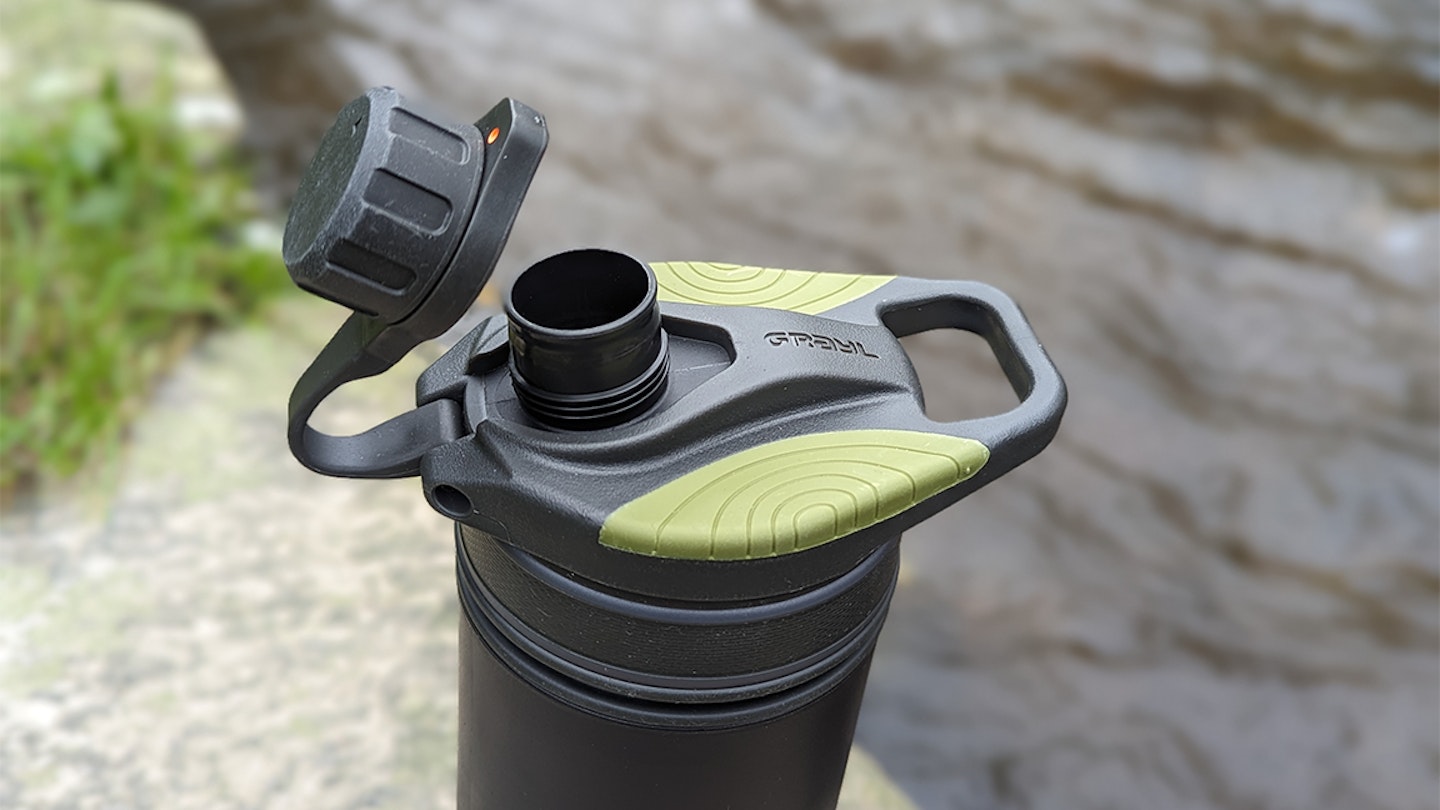
In our opinion, the best feature of the GeoPress is the build, which allows you to pour filtered water into additional bottles and re-fill the GeoPress until you have as much clean water as you can carry. There’s no need to drink out of a straw either, which can get old quickly when using the bottle for long trips or several weeks or months. This newest version of the GeoPress is also compatible with electrolytes and other drink mixes when combined with the Grayl Electrolyte Drink Mix Valve, hydration tabs can be added to the clean inner water compartment without damaging the filter or valve.
Obviously, a filter bottle is never going to be as slim or lightweight as a normal bottle and the GeoPress is no exception. The largest bottle of the range and version tested here is the 24oz bottle, which stands at 26.5cm in height and 8.6cm in diameter. With the double layer, it’s a touch heavier at 450g than your average bottle too, but the construction of the GeoPress makes it extra durable and built to withstand drops and bashes.
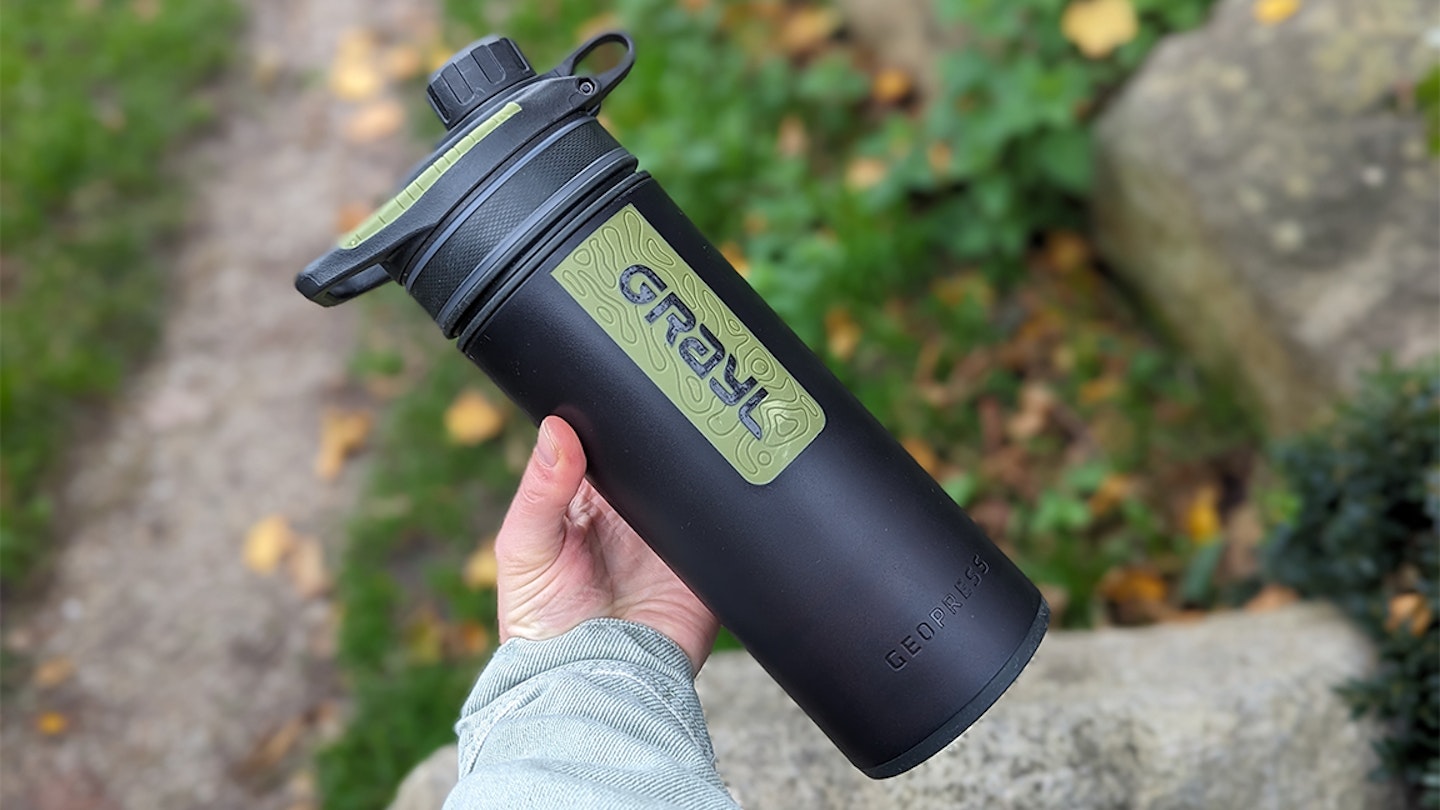
The GeoPress is made from BPA-free polypropylene, food-grade silicone and TPE, with tactile and grippy silicone touch points which makes it easy to hold when drinking and press down when filtering water. The GeoPress comes in both bright ‘nature edition’ colour ways and the more ‘covert edition’ tested here.
What exactly can the GeoPress filter?
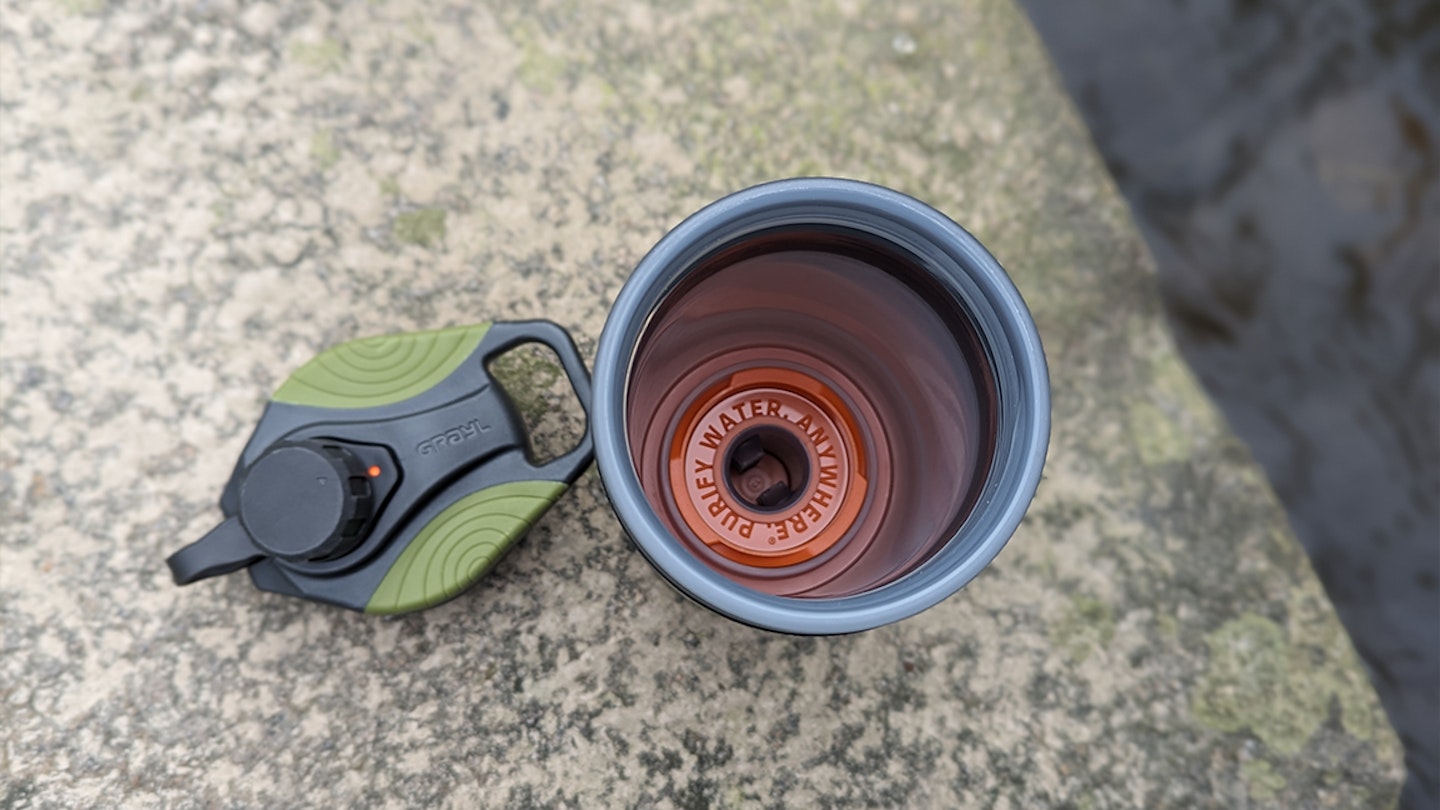
The GeoPress is designed to remove 99.99% of waterborne pathogens that you can’t necessarily see, including viruses, bacteria, and protozoan cysts. These include the main threats in unclean water found around the world: Hepatitis A, Norovirus, E. Coli, Cholera, Salmonella, Dysentery, Rotavirus, Giardiasis, Cryptosporidium, among others.
The purifier cartridge also filters out particles such as sediment from river water, pesticides, microplastics, and metals. The technology used within the filter is electroadsorption and ultra-powered activated carbon, which absorbs chemicals. It’s also chemical free and should reduce any overpowering taste or odour from the dirty water.
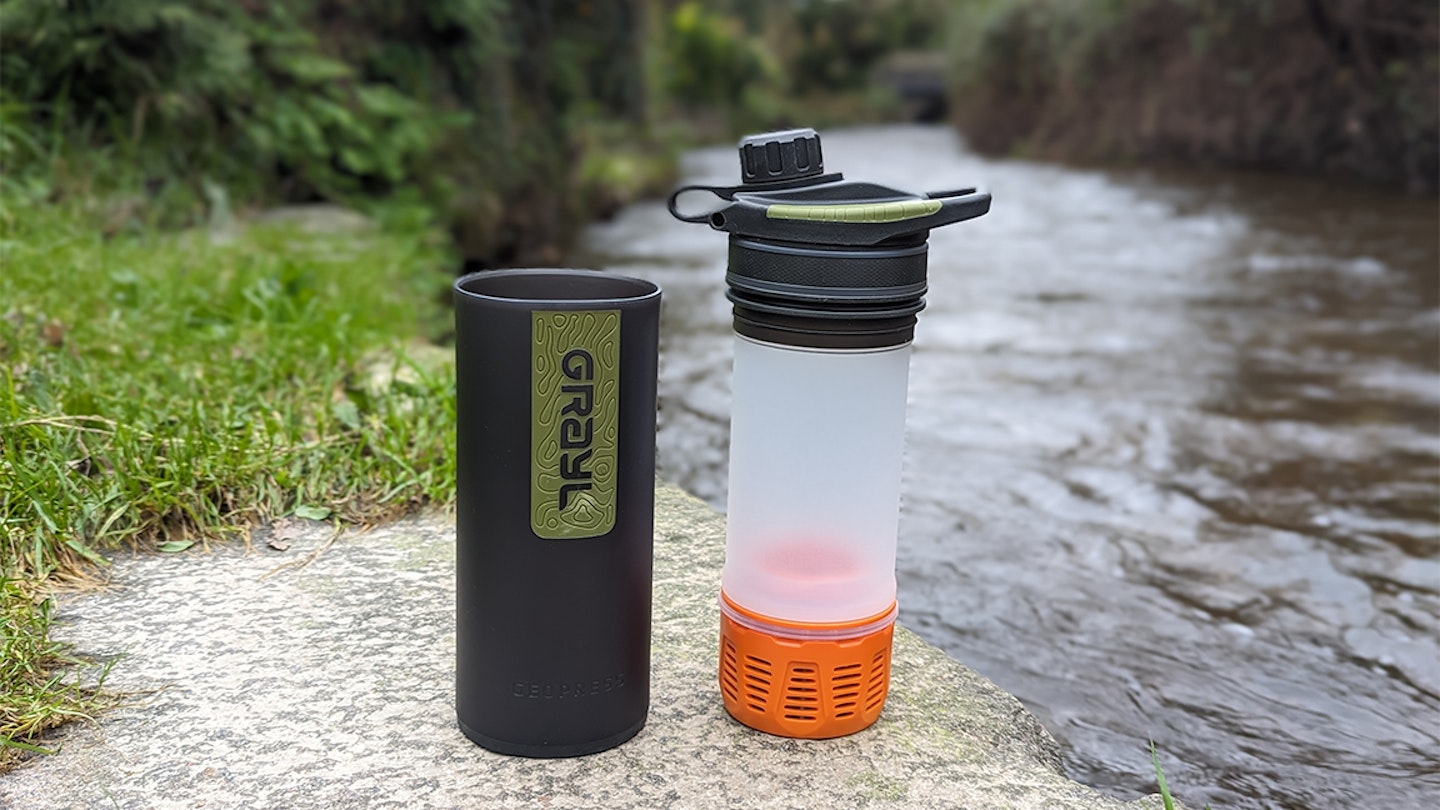
Once pressed down, the water that sits in the inner chamber of the bottle is filtered of impurities and safe to drink. The GeoPress cartridge ( https://grayl.com/products/geopress-replacement-filter-purifier-cartridge) is made to last for around 350 presses, depending on the amount of sediment and tannin in the water being filtered. No need to count though, Grayl recommends that once the press time extends to 25-30 seconds (or three years since first use), the cartridge is ready to be replaced. An unopened cartridge has a shelf-life of 10 years.
Testing standards
When it comes to testing standards and safety of the bottle, Grayl says: “independently tested by a certified laboratory to meet or exceed NSF/ANSI protocol 42 and 53 for pathogen and chemical removal; meets the the United States Environmental Protection Agency's Guide Standard and Protocol for testing microbiological water purifiers.”
The GeoPress has a ten year warranty which covers the construction and materials used. Replacement parts, including filter cartridge and bottle valve, can also be bought separately to extend the lifespan of the bottle.
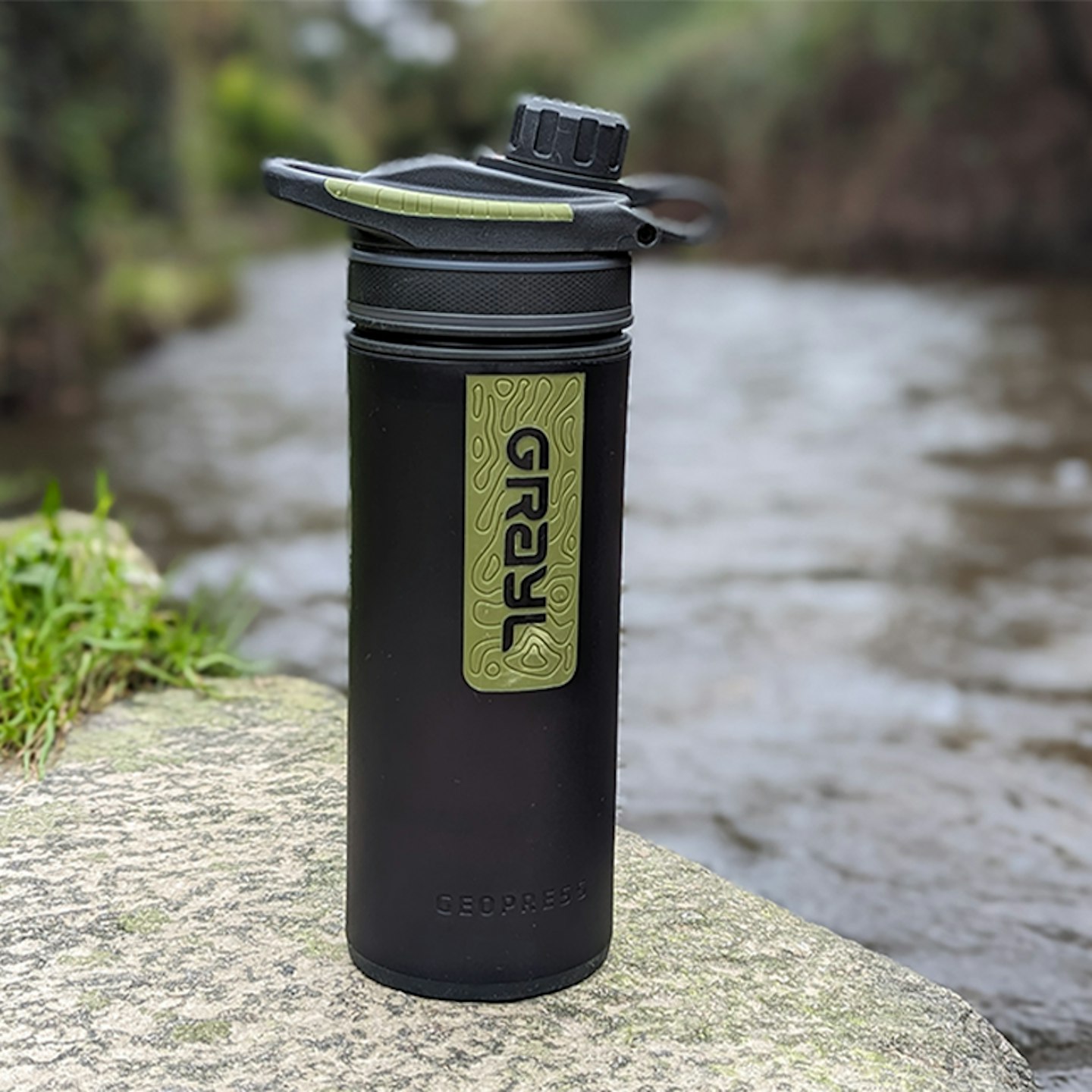 LFTO
LFTO